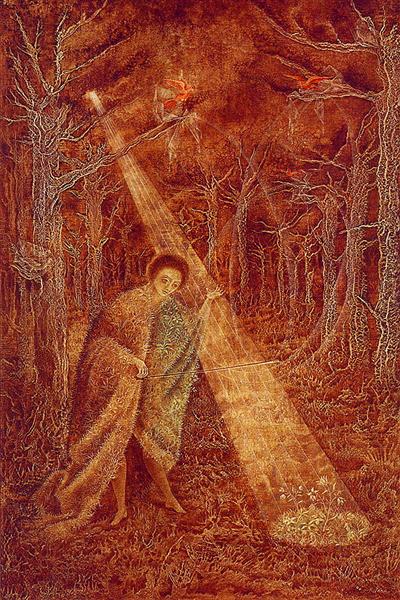Solar Music by Remedios Varo (Interpretation and Analysis)
 |
| Solar Music Source: WikiArt |
Varo’s profound creativity can be seen in paintings like Solar Music, a masterpiece that was created in 1955. The piece reflects Varo’s perennial interest in creation and creative acts. The piece depicts a forest, painted in shades of red and other earth tones. A woman—who strongly resembles Varo—stands in the center of the scene, dressed in a voluminous robe that seems to be made out of the forest floor itself. She draws a bow across a beam of light; this, presumably, is the solar music. In this artistic world, the combination of light and music (symbolized by the bow) creates a mystical force.
A flower springs from the earth where the light touches the ground, implying that the solar music is a creative force, something that generates new life. This spiritual, creative energy is linked to the natural world, as symbolized by the woods.
The style of the piece itself draws from Medieval art. Traditionally, Medieval art contains strong spiritual and symbolic undertones, and Solar Music is no different. It is a spiritually rich piece, and it is the transcendent aspects of Varo’s paintings that give them their power. Personally, I find Solar Music to be a beautiful and inspiring piece of art, one of Varo’s finest works.
Disclaimer: I’m not an art historian or an expert on this topic. The above is my opinion, based on my interpretation of my foreknowledge of art and history. If I’ve done any additional research, I’ll note it above.



Comments
Post a Comment